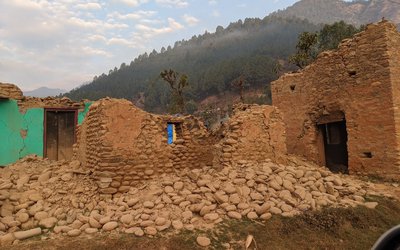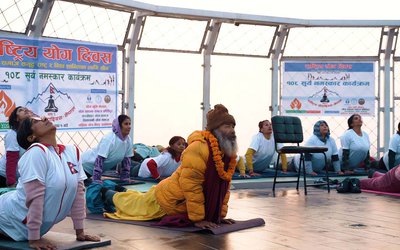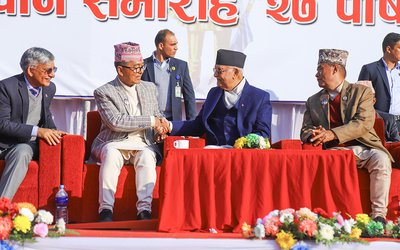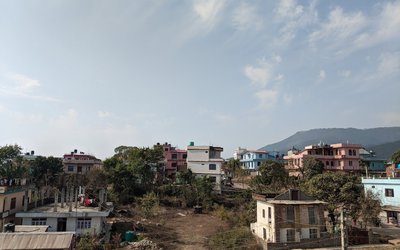
New data reveal that the UN's Sustainable Development Goals, particularly Goal Target 8.7, will not be achieved unless efforts to fight modern slavery and child labor are dramatically increased.
Deputy prime minister and foreign minister Krishna Bahadur Mahara, participated in the Leaders’ Event on Forced Labor, Modern Slavery and Human Trafficking organized on the margins of the UNGA by Theresa May, the British Prime Minister.
According to Ministry of Foreign Affairs, Deputy Prime Minister Mahara highlighted the need to focus on education and awareness in partnership with UN Agencies and NGOs, while adding that Nepal was committed to get rid of forced labour, slavery and human trafficking, and bonded labour addressing the meeting.
Released in New York by ILO News, new research developed jointly by the International Labor Organization (ILO)and the Walk Free Foundation, in partnership with the International Organization for Migration (IOM)3 , has revealed the true scale of modern slavery around the world. The data, released during the United Nations General Assembly, shows that more than 40 million people around the world were victims of modern slavery in 2016.
The ILO has also released a companion estimate of child labor, which confirms that about 152 million children, aged between 5 and 17, were subject to child labor.
There are an estimated 40 million people trapped in Modern Slavery. Women and girls are disproportionately affected by modern slavery, accounting for almost 29 million, or 71 per cent of the overall total. One in four victims of modern slavery are children, or about 10 million children. Some 37 percent (or 5.7 million) of those forced to marry were children
An estimated 25 million people were in forced labor at any moment in time in 2016. Out of them, 16 million people were in forced labor exploitation in the private sector such as domestic work, construction, agriculture. About 5 million persons were in forced sexual exploitation, and just over four million persons (or 16 per cent of the total) were in forced labor imposed by their state authorities.
According to a study, an estimated 15. 4 million people were living in a forced marriage at any moment in time in 2016. Of this total, 6.5 million cases had occurred in the past 5 years (2012-2016) and the remainder had taken place prior to this period but continued into it. More than one third of all victims of forced marriage were children at the time of the marriage, and almost all child victims were girls.
Similarly,152 million children – 64 million girls and 88 million boys – are subject to child labor and account for almost one in ten children around the world. The highest number of children aged 5 to 17 engaged in child labor were to be found in Africa (72.1 million), followed by Asia and the Pacific (62 million), the Americas (10.7 million), Europe and Central Asia (5.5 million) and the Arab States (1.2 million). Approximately one third of children aged 5 to 14 engaged in child labor are outside the education system. 38 per cent of children in hazardous work aged 5 to 14 and almost two-thirds of those aged 15-17 work more than 43 hours per week.
The new estimates also show that women and girls are disproportionately affected by modern slavery, accounting almost 29 million, or 71 per cent of the overall total. Women represent 99 per cent of the victims of forced labor in the commercial sex industry and 84 per cent of forced marriages.
The research reveals that among the 40 million victims of modern slavery, about 25 million were in forced labor, and 15 million were in forced marriage.
Child labor remains concentrated primarily in agriculture (70.9 per cent). Almost one in five child laborers work in the services sector (17.1 per cent) while 11.9 per cent of child laborers work in industry.
“These new global estimates can help shape and develop interventions to prevent both forced labour and child labor."
“The message the ILO is sending today – together with our partners in Alliance 8.7 – is very clear: the world won’t be in a position to achieve the Sustainable Development Goals unless we dramatically increase our efforts to fight these scourges. These new global estimates can help shape and develop interventions to prevent both forced labor and child labor,” said Guy Ryder, ILO Director-General.
Andrew Forrest AO, Chairman and Founder of the Walk Free Foundation said: “The fact that as a society we still have 40 million people in modern slavery, on any given day shames us all. If we consider the results of the last five years, for which we have collected data, 89 million people experienced some form of modern slavery for periods of time ranging from a few days to five years. This speaks to the deep seated discrimination and inequalities in our world today, coupled with a shocking tolerance of exploitation. This has to stop. We all have a role to play in changing this reality – business, government, civil society, every one of us.”
The new global estimates are a collective effort from members of Alliance 8.7, the global partnership to end forced labor, modern slavery, human trafficking and child labor that brings together key partners representing governments, UN organizations, the private sector, workers’ and employers’ organizations and civil society in order to achieve Sustainable Development Goal Target 8.7.
Forced labor and forced marriage, prepared jointly by the International Labour Organization (ILO) and Walk Free Foundation, in partnership with the International Organization for Migration (IOM). Read the Executive Summary.
Global estimates of child labor prepared by the International Labor Organization (ILO).
With information added from ILO News released from New York
- GLOBAL IME BANK: Celebrating Eighteen Years of Progress
- Jan 13, 2025
- JALPADEVI CABLE CAR: IME Group's Latest Project
- Jan 12, 2025
- NIMB Achieves Accreditation With Green Climate Fund (GCF)
- Jan 10, 2025
- NATIONAL UNITY DAY: Unity Trail
- Jan 10, 2025
- TOURISTS ARRIVAL: Surpass A Million
- Jan 10, 2025















